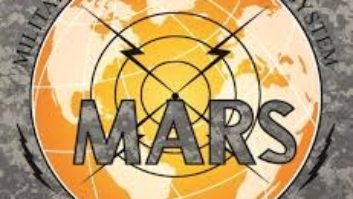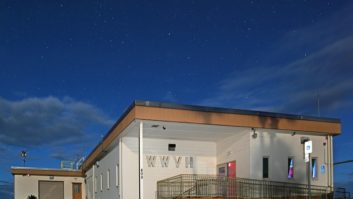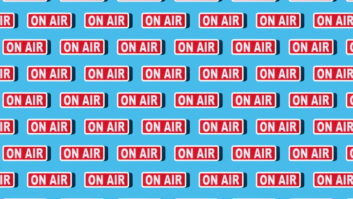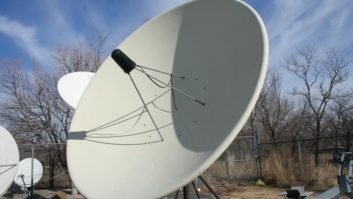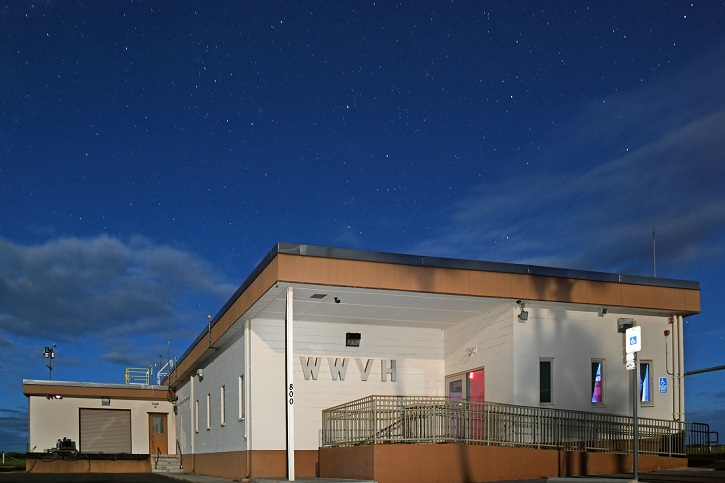
Last year was one of both celebration and uncertainty for WWV, the station adjacent to Fort Collins, Colo., that transmits automated time broadcasts on the shortwave bands.
On the plus side, it marked the 100th year of WWV’s call letters, making the site, operated by the National Institute of Standards and Technology, one of the world’s oldest continually operating radio stations.
On the negative side, WWV and its sister time station WWVH in Hawaii nearly missed this centennial. That’s because NIST’s original 2019 budget called for shutting down the pair, along with WWVB, the longwave code station co-located next to WWV, as a cost-saving move.
Fortunately, these cuts never happened, and WWV, WWVH and WWVB seem likely to keep broadcasting the most accurate time from NIST’s atomic clocks, at least for the immediate future. (No further cuts have been threatened.)
That’s good news for the stations’ many supporters, who say that time broadcasts still matter in the Internet Age.
What They Have to Offer
Today, listeners around the world can get the most accurate time possible via WWV and WWVH’s broadcasts on the shortwave bands.
To make this happen, “WWV broadcasts continuously on six shortwave frequencies: 2.5, 5, 10, 15, 20 and 25 MHz,” said Glenn Nelson, an electronics technician at WWV and WWVB. “WWV has 11 operational HF transmitters (including standby equipment), eight transmitting antenna towers, and associated time and frequency distribution equipment.”
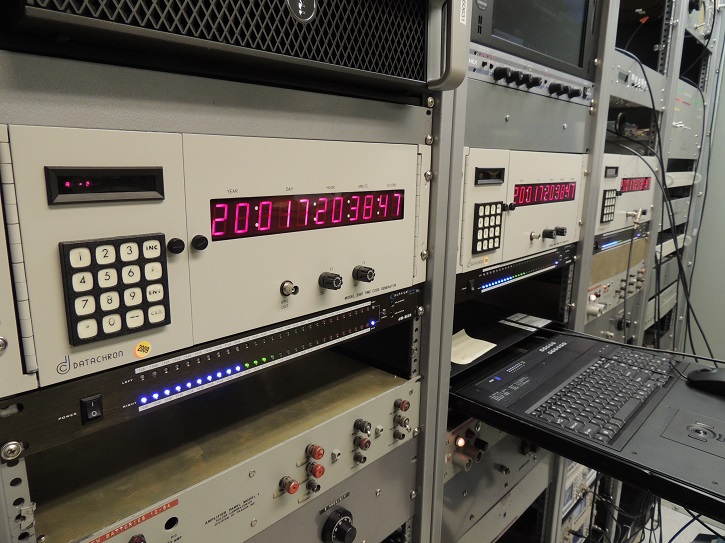
Located on the southwest portion of Kauai, WWVH “broadcasts 5 kW on 2.5 MHz and 10 kW on 5.0, 10.0 and 15.0 MHz,” said WWVH Station Engineer Dean Okayama. “The time/frequency systems and transmitters are similar to WWV.”
Both stations are known for the automated voices that tell the current time; WWV uses a male voice, while WWVH uses a female one, both timed to speak one after the other whenever both stations are heard on their shared channels.
This NIST service also broadcasts standard time intervals, standard frequencies and other information including solar conditions affecting radio propagation. Both stations report the time using the Coordinated Universal Time zone, a.k.a. Greenwich Mean Time, which is five hours head of Eastern Standard Time.
In the early days of radio, WWV/WWVH’s standard frequencies were used by commercial broadcasters to calibrate their transmitters to their assigned frequencies.
“In the 1930s, WWV began broadcast standard time interval pulses,” said Nelson. “In the 1940s, the U.S. Navy granted WWV permission to broadcast time of day announcements (this had been the exclusive responsibility of the Naval Observatory up until then). Voice announcements of time were added in the 1950s and a digital time code was added in 1960. In the ’70s, the WWV audio signal was made available by telephone at (303) 499-7111, and this service has continued to the present day.”
Why They Still Matter
The possible closing of WWV, WWVH and WWVB did not pass unnoticed. Tens of thousands of supporters signed petitions opposing the move, for a variety of reasons.
Even today, WWV and WWVH’s standard time broadcasts and frequencies are a great help for engineers calibrating equipment.
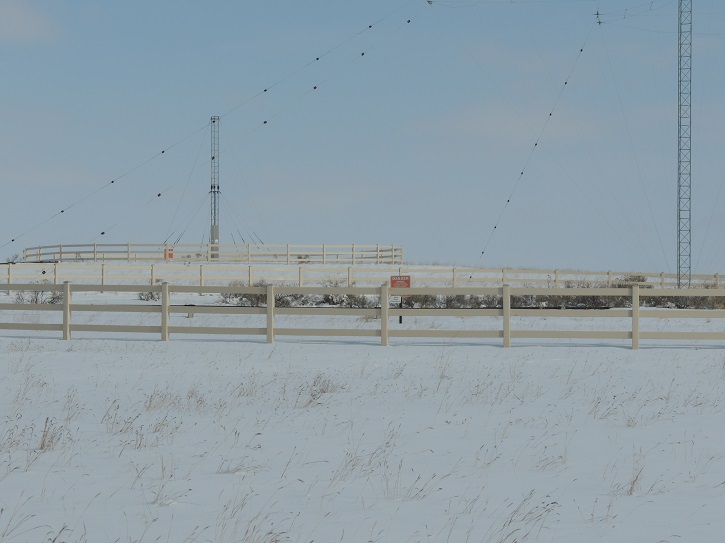
“While time-of-day information can nowadays be obtained through the internet, the combination of circuits involved in internet distribution can result in delays,” said Dr. Kim Andrew Elliott, retired Voice of America broadcaster and audience research analyst, and now producer of the experimental broadcast Shortwave Radiogram.
“These delays usually involve fractions of seconds, but that is enough to be significant in certain endeavors such as high-speed trading. For a lack of delay, nothing beats terrestrial radio. It is held back only by that pesky speed of light.”
WWV/WWVH’s audio tones are also precise and thus useful.
“On WWV, the 440 Hz tone (the musical note A above middle C) is broadcast once each hour, during Minute 2 on WWV, and Minute 1 on WWVH,” Elliott said. “You can tune your violin using WWV.”
On a more scientific note, these reliable signals play an important role in forecasting “space weather,” which can have a serious impact on the world economy whenever it gets “stormy.”
“As WWV’s signals move from their transmitter site in Fort Collins to shortwave receivers, they pass through the ionosphere and undergo slight delay and frequency changes,” said Dr. Philip Erickson of the MIT Haystack Observatory’s Atmospheric and Geospace Sciences Group.
“These changes, if measured carefully, contain much information on waves, density changes and other phenomena that form space weather known to affect national telecommunications, long-distance power grids, and human spaceflight.”
Initially, these changes could only be detected using professional-grade receivers. But times have changed.
“Atomic clock signal accuracy at the Colorado and Hawaii transmission sites means that modest receivers using inexpensive, modern technology can use these time signals as beacons to sense ionospherically induced changes,” Erickson said.
“This allows the formation of a distributed space weather network in the backyards of thousands of amateur radio enthusiasts across the continental U.S.”
Such a concept is being realized now by the Ham Radio Science Citizen Initiative (HamSCI; www.hamsci.org), which is developing a personal space weather station for use by citizen scientists.
They Would Be Missed
These benefits would come to an end should NIST’s time stations ever go dark.
“The ideas I’ve outlined, plus other similar concepts, naturally extend WWV’s 100-year historic mission into the 21st century, and form an important part of national infrastructure in both the professional and emerging citizen science field,” said Erickson.
“It is vital that these signals continue to operate for the benefit of advancing human understanding of our near-Earth space environment.”
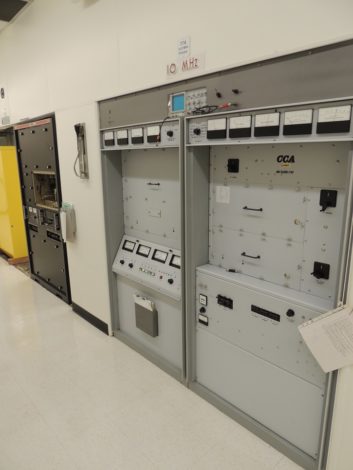
It’s not just WWV and WWVH that would be missed: “The general public will take notice if NIST station WWVB shuts down as its 60 kHz signal controls self-setting clocks known as ‘atomic’ clocks,” said Thomas Witherspoon, editor of the shortwave radio website the SWLing Post.
“Many don’t realize it, but a large portion of wall clocks, alarm clocks and watches, not to mention weather stations, cameras and potentially a number of other devices, have a built-in receiver that self-calibrates,” he said.
“NIST notes that there are more than 50 million radio-controlled clocks in operation and another few million wristwatches that rely on WWVB for self-calibration.
“The thing is, these devices are so embedded in our lives here in North America we scarcely notice them, and many consumers likely assume they’re set by the internet. They’re not.”
A Defense Against Fake News?
WWV and its sister stations could also have relevance now for another reason.
“The internet has become infamous as a purveyor of false information and counterfeit sites,” said Kim Andrew Elliott. “This is true even during emergencies, including the coronavirus outbreak.
“WWV and WWVH can be useful transmitters of emergency information: They are much more difficult to spoof than a website,” he told RW. “If a fake station tries to transmit on WWV/WWVH frequencies, co-channel with WWV and WWVH, the listener will hear immediately that something is not right. If the fake station comes from overseas, it will usually sound distant, compared to the signal we are used to hearing in North America.”
Comment on this or any story. Email [email protected] with “Letter to the Editor” in the subject field.

